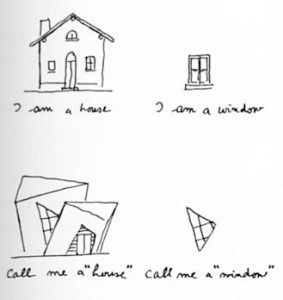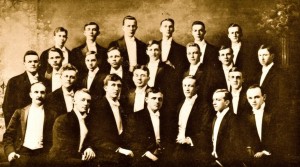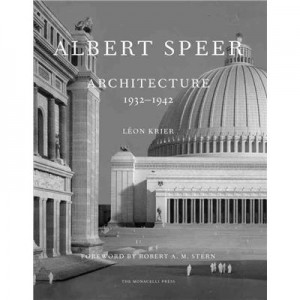TOO MANY WORDS
 I was listening to a lecture on YouTube by Léon Krier. He was in full apocalyptic mode, his rousing talk illustrated by his charming but barbed drawings. At one point he recounted a quotation: “I wish I could speak a language where no word is repeated.” Krier couldn’t remember the source–it sounds like Marcel Duchamp or Max Ernst to me. In any case, Krier’s point was that this could serve as a maxim for today’s modernist architects, who judge themselves–and are judged–almost solely on their originality. What makes the metaphor so cutting is that a language of unrepeated words would be simply meaningless gobbledygook,
I was listening to a lecture on YouTube by Léon Krier. He was in full apocalyptic mode, his rousing talk illustrated by his charming but barbed drawings. At one point he recounted a quotation: “I wish I could speak a language where no word is repeated.” Krier couldn’t remember the source–it sounds like Marcel Duchamp or Max Ernst to me. In any case, Krier’s point was that this could serve as a maxim for today’s modernist architects, who judge themselves–and are judged–almost solely on their originality. What makes the metaphor so cutting is that a language of unrepeated words would be simply meaningless gobbledygook,



